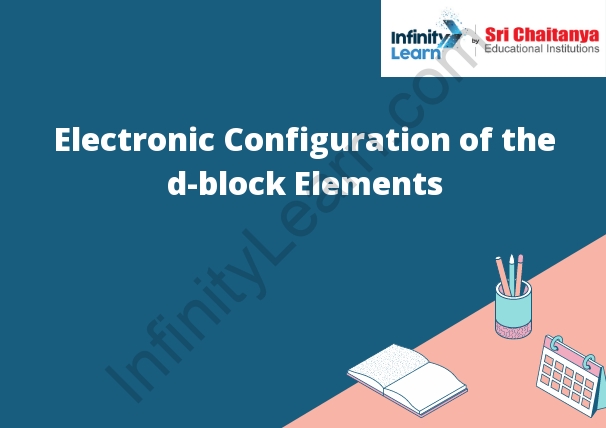Table of Contents
electronic-configuration-of-the-d-block-elements
The d-block elements are located in the second row of the periodic table and have 10 electrons in their outermost energy level. The electron configuration of the d-block elements can be represented by the following diagram:
1s2 2s2 2p6 3s2 3p6 4s2 3d10 4p6 5s2 4d10 5p6 6s2 4f14 5d10 6p6
The d-block elements can be divided into two groups: the transition metals and the inner transition metals. The transition metals are located in the lower part of the d-block and have an electron configuration that can be represented by the following diagram:
1s2 2s2 2p6 3s2 3p6 4s2 3d10 4p6 5s2 4d10 5p6 6s2 4f14 5d10 6p6
The transition metals have a partially filled d-subshell that can accommodate six more electrons. The inner transition metals are located in the upper part of the d-block and have an electron configuration that can be represented by the following diagram:
1s2 2s2 2p6 3s2 3p6 4s2 3d10 4p6 5s2 4d10 5p6 6s2 4f14 5d10 6p6
The inner transition metals have a completely filled d-subshell

Electronic Configuration
An atom’s electronic configuration refers to the specific arrangement of electrons in its outermost energy level. The outermost energy level is also called the valence shell. The electronic configuration of an atom can be represented by a shorthand notation in which the number of electrons in each energy level is written as a superscript. The configuration of the hydrogen atom is written 1s1. This means that the atom has one electron in its first energy level and no electrons in its second energy level. The electronic configuration of the helium atom is written 1s2. This means that the atom has two electrons in its first energy level.
1st Series Electronic Configuration of d-Block Elements
The d-block elements are those elements in the periodic table that are located in the second row, from the bottom, and have an electronic configuration that can be written as ns2np6. These elements include chromium (Cr), manganese (Mn), iron (Fe), cobalt (Co), nickel (Ni), copper (Cu), and zinc (Zn).
The d-block elements have an electronic configuration that can be written as ns2np6, which means that they have two electrons in their outermost shell (the s-orbital) and six electrons in their next-outermost shell (the p-orbital). The d-block elements are able to form compounds that contain metal-metal bonds, which is why they are called “metals.”
2nd Series Electronic Configuration of d-Block Elements
The second series of the electronic configuration of the d-block elements are as follows:
1s2 2s2 2p6 3s2 3p6 4s2 3d10 4p6 5s2 4d10 5p6 6s2 4f14 5d10 6p6 7s2 5f14 6d10 7p6 8s2 6f14 7d10 8p6.
In the second series, the elements have an additional d-electron in their outermost energy level. This gives them a slightly different electronic configuration, which affects their chemical properties.
3nd Series Electronic Configuration of d-Block Elements
The first series of the electronic configuration of the d-block elements are:
1s2 2s2 2p6 3s2 3p6 4s2 3d10 4p6 5s2 4d10 5p6 6s2 4f14 5d10 6p6 7s2
The second series of the electronic configuration of the d-block elements are:
1s2 2s2 2p6 3s2 3p6 4s2 3d10 4p6 5s2 4d10 5p6 6s2 4f14 5d10 6p6 7s2
4th Series Electronic Configuration of d-Block Elements
The electronic configuration of the d-block elements can be represented by the following diagram.
The valence electrons are shown in red.
Position of Periodic Table d Block Elements
The d block elements are located in the middle of the periodic table. The d block elements are the transition metals.
The Reason Behind the Colored d-Block Elements
The colored d-block elements represent the different number of valence electrons in each element. The elements in the d-block are all metals, which means they have a valence of +1. The elements in the d-block are also in groups 3-12 on the periodic table. Group 3 has 3 valence electrons, group 4 has 4 valence electrons, and so on.








